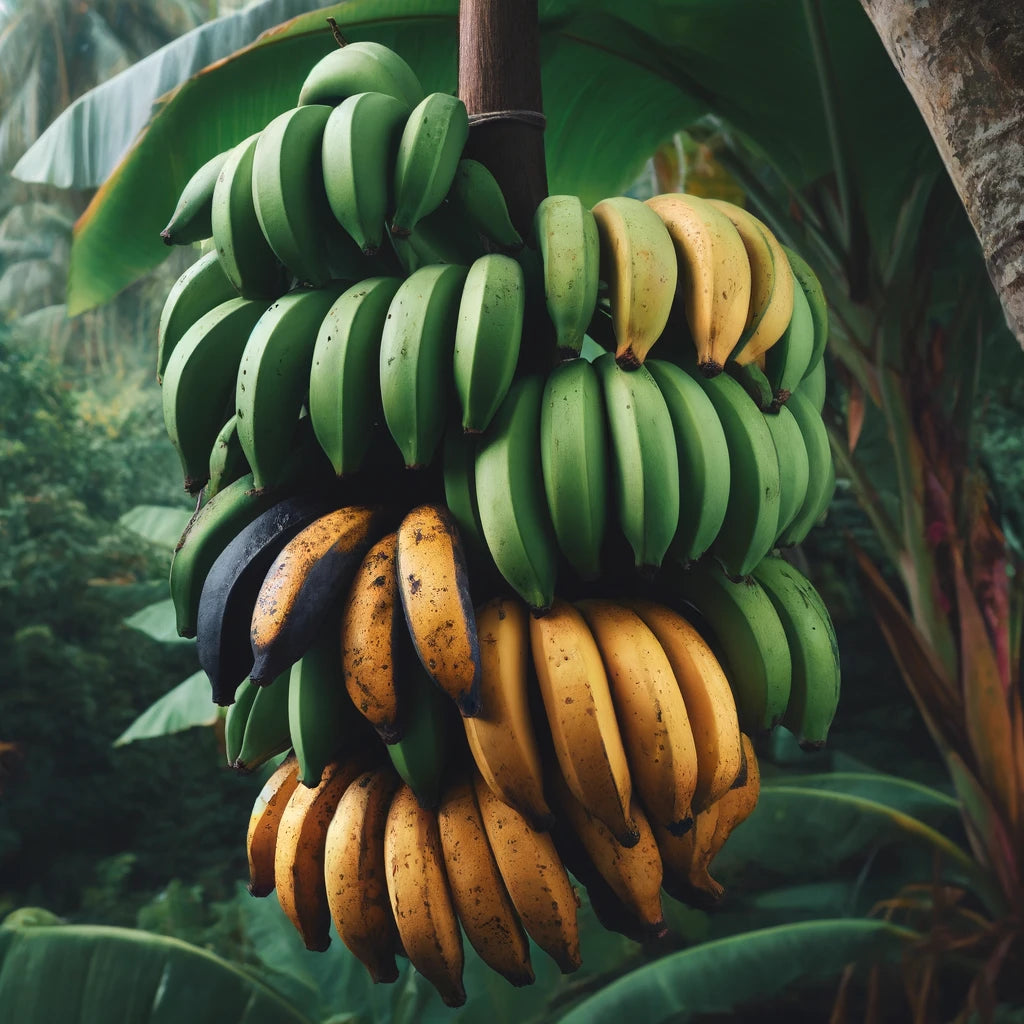Ripening plantains is essential for enjoying their sweet, soft texture in various recipes. Here's a comprehensive guide to ripening plantains effectively using natural methods, with a touch of personal experience.
Using Green Plantains
Green plantains can be used just as they are. They are starchy and firm, making them perfect for savory dishes like Akan apem (boiled plantains), Fufu, Ampesi, tostones (twice-fried plantain slices), plantain chips, and soups. These dishes benefit from the firmness and subtle flavor of green plantains.
Why Ripen Plantains?
For recipes that require a sweeter taste and softer texture, such as Ghanaian kelewele, Kaklo, plantain pancakes, plantain bread, or caramelized plantains, ripening is essential. Here are my preferred methods for ripening plantains.
Method 1: Container and Paper Method (My Preferred Method)
As someone who often ripens plantains, I find the container and paper method particularly effective, especially when I plan to sell or use them in special recipes. This method ensures the plantains look great and ripen evenly.
- Clean Plantains: Wipe off any dirt and moist from the surface of the plantains.
- Prepare Container: Choose a container with a lid that is large enough to fit the plantains without overcrowding.
- Line the Container: Place a layer of paper (newspaper or paper towels) at the bottom of the container. This helps in absorbing moisture and allows for even ripening.
- Place Plantains and Apples: Arrange the cleaned plantains in the container. Add apples among the plantains. Apples emit ethylene gas, which speeds up the ripening process.
- Cover with Paper: Place another layer of paper on top of the plantains. This helps in maintaining a controlled environment for ripening.
- Seal the Container: Cover the container with its lid. Ensure it is not airtight, as some air circulation is beneficial.
- Store in Warm Place: Place the container in a warm, dry area. A temperature range of 65-75°F (18-24°C) is ideal.
- Check Daily: Open the container daily to check the ripeness of the plantains and ensure no excess moisture is present. Replace the paper if it becomes too damp.
- Use or Store: Once the plantains have ripened to your desired level (yellow or yellow with dark spots), they can be used immediately. If you are not ready to use them, place the ripe plantains in the refrigerator to slow down further ripening.
Method 2: Paper Bag Method
Sometimes, when I have fewer plantains to ripen or want a quicker solution, I use the paper bag method. This method is simple and effective, especially if you need ripe plantains quickly.
- Clean: Wipe off any dirt and moist from the surface of the plantains.
- Place in Bag: Put the plantains in a paper bag. You can also add an apple or a banana to the bag to speed up the ripening process due to the ethylene gas they emit.
- Seal the Bag: Fold the top of the bag to close it but do not seal it too tightly. The bag should allow some air to circulate.
- Storage: Store the bag in a warm, dry place. Check the plantains daily.
- Use: Once the plantains have turned yellow or yellow with dark spots, they are ripe. Use them immediately or refrigerate.
Method 3: Natural Ripening
For the plantains I keep in my physical store at Zemynos Gatve 18 in Vilnius, they often end up ripening naturally unless I keep them in the fridge to prevent ripening. This method is the most hands-off approach and works well if you're not in a rush.
- Clean: Wipe off any dirt from the surface of the plantains.
- Storage: Place the plantains in a warm area with good ventilation. A room temperature between 65-75°F (18-24°C) is ideal.
- Wait: Allow the plantains to sit undisturbed. Check them daily. The plantains will turn from green to yellow and eventually to black, indicating they are fully ripe. Sometimes, the skin of the plantains would look black, but they are still fresh and good to be used.
- Use: Once they have reached your desired level of ripeness, you can use them immediately or store them in the refrigerator to slow further ripening.
Tips
- Ventilation: Ensure there is some airflow in the container to prevent mold growth.
- Monitoring: Daily checking helps in preventing over-ripening and spoilage.
- Alternatives: If you don't have apples, you can use bananas as they also produce ethylene gas.
By following these methods, you can ensure your plantains ripen perfectly, ready for your favorite recipes. Whether you're preparing them for sale, special recipes, or just everyday use, these steps will help you achieve the desired ripeness.

